- Administrator
- Albums and Singles
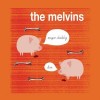
The Melvins are a touring machine; I have been fortunate enough to see them play four or five times during the last decade. They have also put their shows to tape on nearly a dozen releases. While many of those recordings are not top-shelf quality, this new release is the best document of the Melvins live experience to date.
The 13 songs on Sugar Daddy Live, while recorded at an undisclosed time, seems to predate the Melvins' most recent studio full-length, The Bride Screamed Murder, which was a bit of a mixed bag. Instead, the band kicks off the show with three punchy songs from 2008's Nude with Boots, sticking to recent material for most of the setlist. "Civilized Worm," from 2006's utterly fantastic A Senile Animal, is an early highlight, its lockstep rhythm and easy-to-shout-along-to verses suiting the Melvins' playing—raucous, upbeat, forceful playing, a slight increase in tempo, and lots of crunch.
Since 2006, Jared Warren and Coady Willis, founding members and lynchpins in Big Business, have also served as full-time members of the Melvins—a combination that has not only resulted in a late-career spark and several great albums, but their most powerful live lineup to date. I'm sure Melvins know this, of course, as they keep the emphasis squarely on material made with their current line-up. As the show moves along, they do dip into their back catalog a couple times—first for a nine-minute version of "Eye Flys," the lead track from 1987's debut Gluey Porch Treatments, then for "Tipping the Lion," from 1996's difficult Stag. Those two cuts aside, the band draws all the other songs in the main set from A Senile Animal and Nude with Boots.
In keeping with the Melvins' odd sense of humor, the encore starts off with straight-faced, and therefore subtly bizarre, reading of "The Star Spangled Banner." Naturally, this segues into a 12-minute, feedback-laden version of fan favorite (and namesake of one of metal's most chameleonic, yet very clearly Melvins-indebted, bands) "Boris." That song opens its parent album, 1991's inimitable Bullhead, serving as a swampy, smacked-out lead-in to a half-hour sludgefest. Here, it closes a joyous, energetic live show just as effectively.
It is apparent, from the enthusiasm on display, that Buzz Osborne and Dale Crover still get a kick out of playing together and aren't just going through the motions. Coupled with their revamped line-up and song selection, Sugar Daddy Live is the Melvins' best live document. These songs hold their own with anything in the band's back catalog, drawn from their most inspired albums since their mid-'90s winning streak—Houdini, Stoner Witch, and Stag—as uncompromising a run as I have heard on a major label. That's a high compliment to A Senile Animal and Nude with Boots: unlike most bands their age, Melvins are making vital albums a quarter-century into their career. By the evidence on Sugar Daddy Live, they remain committed to totally killing it on the live circuit, too.
Samples:
Read More
- Administrator
- Albums and Singles
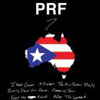 Cut from a similar cloth as the previous single and EP, the first full fledged album from Puerto Rico Flowers doesn’t take any drastic leaps in style, but instead is a more developed, refined version of the former Clockcleaner vocalist John Sharkey III's modern goth pop project that perfectly balances nostalgia and modernism, and has been doing a good job of getting stuck in my head ever since I first heard it.
Cut from a similar cloth as the previous single and EP, the first full fledged album from Puerto Rico Flowers doesn’t take any drastic leaps in style, but instead is a more developed, refined version of the former Clockcleaner vocalist John Sharkey III's modern goth pop project that perfectly balances nostalgia and modernism, and has been doing a good job of getting stuck in my head ever since I first heard it.
Much has been discussed of how seemingly drastic of a shift Puerto Rico Flowers is from Clockcleaner, but I don't see it as such a drastic leap.Sharkey's other project always had an underlying post-punk, pop-infused current that was intentionally obscured by the absurdist machismo grandstanding and snarky humor.Clockcleaner always sounded like it would be perfect in a dingy bar that reeks of stale beer and staler piss, but without that ambience, PRF would sound rather similar I think.
These seven songs maintain a similar pace, mostly lead by distorted bass and synths and thus have a consistent feel (consistent, but not overly similar to one another).Opener "I Feel Good" instantly reminded me of the plodding, pounding beats of the first Killing Joke album, which was even further enhanced with the trademark over-driven bass rhythms.However, the synth work pushes it into a different realm of bleak.
Again, there's definite parallels with other artists to be heard, but never does it feel like a direct rip-off of anyone.For one, Sharkey's voice has pretty much locked in to a Dave Gahan model with hints of Ian Curtis.Some of the individual songs too feel almost like tributes:the slow drum programming and bass lead of "Freezing Tears" instantly reminded me of the Sisters of Mercy cover of "Emma," but without the cock rock grandstanding and pseudo-ironic pretense.
One of the biggest leaps on this album is definitely Sharkey’s vocals.While it still retains the expected death rock monotone sound throughout, there’s more actual "singing" going on all around, whichprevents monotony from setting in.The aforementioned "I Feel Good" for example, shows a wide range, sonically and emotionally, making it a personal favorite song.
This variety leads to an almost pop sensibility in the sense that the songs become quite catchy and memorable, which an achievement for a project that is heavily focused on mantra-like repetition.The distinct verse/chorus/verse structure of "3 Sisters" for example, lends a extravagant, almost anthemic quality to it that makes it quite memorable."Keep Me Around," with all its lyrical smugness, is the closest thing to an up-tempo number here: a more brisk pace, catchy chorus and extra guitar, courtesy of Kurt Vile, flesh it out quite well.Closer "After the Weekend" also goes in a drastically different direction, ignoring the drums and just meshing the vocals with a slow, funeral paced synth line and sparse piano.
I mentioned in my first PRF review last year that I felt some common ground between the band and Cold Cave and, considering the spectacle that is Cherish the Light Years, the two projects are taking very divergent paths.While I loved the Cold Cave album too, 7 is more natural and organic, not focusing on epic production and dramatic effects and instead excels on the strength of the songwriting and arrangements alone.It does everything a debut full length album should:it retains the raw freshness of the earlier singles but in a more polished, developed way that makes it one of my favorite albums this year.
samples:
 
Read More
- Administrator
- Albums and Singles
 Bureau B is a boutique label that, in between new releases, has been tirelessly reissuing little-known albums from the German experimental music realm since 2007. Its most recent selection is Hans-Joachim Roedelius' 1987 solo piano album, Momenti Felici, which I have had on repeat since finally hearing it 24 years after release.
Bureau B is a boutique label that, in between new releases, has been tirelessly reissuing little-known albums from the German experimental music realm since 2007. Its most recent selection is Hans-Joachim Roedelius' 1987 solo piano album, Momenti Felici, which I have had on repeat since finally hearing it 24 years after release.
Momenti Felici opens with "Im Frühtau," which utilizes a two-note pulse derived from krautrock, then overlays resonant piano chords and synthesizer tones. Unlike most of his work with Cluster, Eno and Harmonia, though, it is Roedelius' piano playing that forms the album's backbone. He hangs onto a somber, reflective tone throughout the album, but also paints with a colorful palette. The rich saxophone playing on "Guten Morgen" and "Pas De Deux," courtesy of Alexander Czjzek, is a treat, swelling to fill out the empty space between piano chords. The sprawling ambient drift of "Über Den Wolken," on the other hand, is deeply immersive—and, amazingly, was put to tape a decade before Stars of the Lid would begin to explore similar territory.
Roedelius is equally engaging when he allows his piano playing to shine without accompaniment. He generally plays with more force when he is not competing for space, as on the rollicking descent of chords on "Aufgewacht" or the incisive, rhythmic "Anima Mundi." With the passion Roedelius fires up on these solo tracks, I can envision him under a spotlight on stage, sitting at his grand piano, focused yet full of energy, doing his best to wow those who showed up to hear him that evening.
Once the album winds to a close, Bureau B has included three previously unheard tracks on which Roedelius' piano becomes a touch more contemplative. The standout is the second piece, "Vor Ohren"—I'm not sure what sort of electroacoustic instruments Roedelius has chosen alongside his piano, but the juxtaposition is momentous, electric, and unlike anything on Momenti Felici. Bonus tracks aside, Bureau B has done the album justice with this reissue: the production is sharp, detailed and full of life, and the original artwork is handsomely replicated for a new generation of listeners.
Momenti Felici is by no means Roedelius' most challenging or avant-garde work, nor necessarily his most inventive. Unfortunately, his solo recordings are hardly mentioned alongside his stone-cold classics with Cluster and Harmonia. Perhaps it's time for a broad reevaluation: after over a decade of immersing myself in his better-known classics, I have found myself blindsided by this album—and eager to dig into Roedelius' solo catalog.
Samples:
Read More
- Administrator
- Albums and Singles
Natural Snow Buildings released a "surprise" album made specifically for Record Store Day. Details are below.

Brand new full length CD album from Natural Snow Buildings, made especially for Record Store Day. Following on from January 2011′s “Waves of the Random Sea”, this is the most recent recording from the duo of Mehdi and Solange, recorded over the first three months of 2011.
Epicly dark and brooding folk blurred with psychedelic and ritualistic overtones, this album sounds as good as any other Natural Snow Buildings / Twinsistermoon / Isengrind release, retaining the sound that only this duo can conjure up.
Opener “Chants of Niflheim Part 1″ is a dark reflection upon the concept of its title, followed by “Templars Ritual”, a psychedelic meandering 17 minutes of ritual head nodding zone outs. “Chants Of Niflheim Part 2″ builds ethereal levitation to new forms, from dark to light, blurring heavy riffs with almost vocal instrument sounds to create a mist of unknown. Album closer, “H. Scudder”, opens with Mehdi’s softly sung lyrics layered with percussion and string, heading straight into a deep ritualistic swirling drone section.
“Chants of Niflheim” again concretes Natural Snow Buildings as an essential contemporary duo, crossing the lines of folk drone experimentalism, traditional folk craftsmanship and post rock aesthetic. Again, another essential disc from this French duo.
Limited to 500 copies in full colour 4 panel card sleeves.
Tracks Are :
- Chants Of Niflheim Part I
- Templars Ritual
- Chants Of Niflheim Part II
- H. Scudder
Released on Blackest Rainbow Records, but not available through them.
Read More
- Creaig Dunton
- Albums and Singles
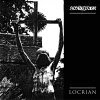
As my reviews of both of these projects over the past few years surely indicates, these are two of my favorite artists working in the post-post metal field, approaching the genre from a conceptual, almost academic mindset rather than a traditionalist one. It was perfectly logical for them to work together, and this 7" makes for a tantalizing teaser for their upcoming collaborative EP.
Locrian has, to me, always been more about the examination of metal in all its facets:rather than working with headbanging riffs or pounding drums, their work has been a careful deconstruction, focusing on the subtle melodies and ambiences that are so often obscured within the genre."In The Absence of Light" at first feels like their earliest work: a deep, submarine guitar chug from Andre Foisy that has a more simplistic, drone type quality to it.That is until Terence Hannum’s synths come in, a soft, almost ambient series of meditative notes that clashes with the grinding chaos.Once the echoing, monastic vocals arrive, the whole song takes on a liturgical quality, simultaneously pious and blasphemous, and coming together beautifully.
Jenks Miller's Horseback project, on the flip side, is a bit different than what I had expected to hear.Horseback is usually all about the riff: slow, pounding guitar passages that become hypnotic in their repetition.On "Oblivion Eaters," however, he’s dabbling in layered, rapid arpeggios and what sounds like expansive keyboards buried deep under them.The varying layers synthesize into an almost melodic underpinning with dense clusters of guitar noise blasting away.Miller’s vocals are once again heavily treated and effected to become another instrument in the dense mix.
The two sides compliment each other nicely, shaping the traditional signifiers of heavy metal into distinct, but consistent compositions.Considering this is the work of the two projects independent of one another, I have high hopes for the upcoming New Dominions collaboration of the two.
 
Read More
- Administrator
- Albums and Singles
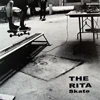
Sam McKinlay's work as The Rita is almost synonymous with the Harsh Noise Walls (HNW) within the noise community. In contrast to the ever changing and eclectic work of artists like Wolf Eyes and Prurient, the HNW adherents are all about worshiping the stagnant mass of barely changing static and white noise that old school artists like CCCC and the Incapacitants created. This LP surprised me with the amount of variation and depth that it actually has, considering what I was expecting.
While I like a good brutal blast of noise here and there, I tend to prefer stuff that has a distinct style or approach.Much of the HNW stuff I've heard simply sounds like the critique often delivered against any noise music:it simply sounds like a broken AM radio playing through a distortion pedal.However, McKinlay's approach to this is much more nuanced and diverse, and while it meets that impenetrable wall of noise criteria for the genre, there’s more going on besides that.
Never one to hide his interests or source material, "Skate" is based on the source recordings of McKinlay skating on a mic'd up metal rail.Immediately upon its introduction, there’s the obvious clack of a skateboard hitting a rail, discernible through the miasma of white noise.As it progresses, the heavy, thick layers of feedback and static occasionally part, allowing the obvious, raw recordings of skateboarding to be heard within, serving as some sort of perverse rhythmic breakdown to the otherwise concrete wall.
The other side, "Snorkel," is constructed from samples of snorkeling and scuba diving from various horror and adventure films.While the source material is never completely apparent, there's a vibe of an old, worn VHS tape with tracking issues throughout:crackling, hissy sound alongside the harsh, brittle noise.While there are no obvious breaks in the sound—as is found on "Skate"—there is a slow, but obvious progression and shift throughout, giving it much more depth than it seems.
There's no chance this LP would appeal to anyone who can't tell the difference between Merzbow and Masonna, but as someone who usually has little interest in the wall noise approach, I found both sides far more captivating than I had expected.The variation and nuance is quite subtle, but definitely there.
samples:
 
Read More
- Administrator
- Albums and Singles
 At one time, it would have been unthinkable for a band renowned for their unrelenting volume, chaos and atonality to release an album with this title. However, Neubauten's modus operandi has always been to confound expectations and even after a decade of softening their sound, Silence is Sexy certainly confounded many listeners at the time. Looking back at it now, it is easy to look at it as the start of a new phase in the group’s development. It has certainly lost little of its potency in the last ten years.
At one time, it would have been unthinkable for a band renowned for their unrelenting volume, chaos and atonality to release an album with this title. However, Neubauten's modus operandi has always been to confound expectations and even after a decade of softening their sound, Silence is Sexy certainly confounded many listeners at the time. Looking back at it now, it is easy to look at it as the start of a new phase in the group’s development. It has certainly lost little of its potency in the last ten years.
From the moment "Sabrina" begins, Silence is Sexy casts its spell on me. Blixa Bargeld’s lyrics cycle through the colors of the German flag and the rest of the band keep a tight rein on the volume; exploring the texture and melodic capabilities of their chosen instruments. These themes run through Silence is Sexy in various forms, creating a solid conceptual backbone for the album. This was the sound of a new Neubauten (Jochen Arbeit and Rudolf Moser both had joined since Ende Neu) and represented a testing of the waters for the various players.
Later in the album, the superb "Die Befindlichkeit des Landes" sees Bargeld ruminating on the state of post-unification Germany, particularly the sense of displacement caused by new construction and the downplaying of history (the name chosen by the band way back in 1980 having a different resonance at the turn of the millennium). He plays on the irony of perhaps Germany’s most famous singer, Marlene Dietrich, commemorated by a tiny square in the Potsdamer area of Berlin. The idea of a new state brought about by the joining of two separate halfs of a city could be seen as a metaphor for the loss of the band’s past (through the loss of F.M. Einheit and Mark Chung) and looking to the future, the what ifs of the latest line up of the group.
The idea of silence and restraint also comes to a head at several points throughout the album. The title track deals with John Cage’s idea of the impossibility of silence all limited to the time it takes to smoke a cigarette. Pregnant pauses and a loping bass line give way to Jochen Arbeit’s "tinnitus guitar" which reinforces Cage’s epiphany in an anechoic chamber that no matter how quiet the environment becomes, some sort of sound will always pervade. Interestingly, the old cliché of the notes they are not playing being important; "Silence is Sexy" was built around Bargeld’s piano but the instrument was edited out in its final presentation.
Towards the end of the album, one of Neubauten’s best songs emerge in the form of "Sonnenbarke." The song is a stunning voyage on a mythical sun barge, full of cosmic splendor. With alchemical grace, Bargeld transforms the November grey of Berlin into a creative journey through a golden, eternal light. The power of the lyrics resonates into the music where Moser’s use of a jet engine as percussive instrument creates a shining, shimmering constellation of tones (and of course the idea of voyage across the sky is semantically linked to the jet engine itself).
This reissue of Silence is Sexy makes some alterations to the format and tracklisting of the album. Firstly, the second disc featuring "Pelikanol" is completely absent leaving Silence is Sexy as a single disc album. Secondly, the main disc follows the original German tracklisting of the album, which replaces "Total Eclipse of the Sun" with "Anrufe in Abwesenheit." Personally, I always preferred the latter to the former (which was available on the international edition of Strategies Against Architecture III) as it fit better with the concepts and music found elsewhere on Silence is Sexy. So for anyone who already owns the album, there is little here to warrant buying it again (unless you want a set of Neubauten branded matches, which are given as a bonus when buying from the band’s website) but for those who have yet to sample this entry in Neubauten’s back catalogue, I heartily recommend it but would suggest tracking down the older two-disc version instead for the definitive experience.
samples:
 
Read More
- Administrator
- Albums and Singles
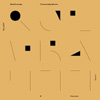 Motion Sickness of Time Travel's Rachel Evans is having a very Emeralds-esque year, unleashing an impressive slew of excellent (and generally pretty limited) releases under a variety of guises. This particular one is her first full-length collaboration with her husband, Nova Scotian Arms' Grant Evans, and it unexpectedly avoids using her characteristic reverb-heavy vocals much at all.  That seems like it should be a significant handicap, but it apparently wasn't, as Grant and Rachel have created a beautifully melancholy and subtly psychedelic ambient opus.
Motion Sickness of Time Travel's Rachel Evans is having a very Emeralds-esque year, unleashing an impressive slew of excellent (and generally pretty limited) releases under a variety of guises. This particular one is her first full-length collaboration with her husband, Nova Scotian Arms' Grant Evans, and it unexpectedly avoids using her characteristic reverb-heavy vocals much at all.  That seems like it should be a significant handicap, but it apparently wasn't, as Grant and Rachel have created a beautifully melancholy and subtly psychedelic ambient opus.
Quiet Evenings is noteworthy in being both perfectly named and quite different from either of its members' solo work.  Transcending Spheres probably shares a bit more common ground with Grant's Nova Scotian Arms' work than Rachel's though, simply because it betrays a clear love of Kosmische/vintage synthesizer music, but it lacks any of the darkness that tends to haunt that project.  Instead, he and Rachel use their synthesizers and treated guitars to create warm and shimmering dronescapes.  This a very womb-like album, which, of course, is not especially novel stylistic territory.  However, Quiet Evenings have clearly spent many of their quiet evenings at home diligently honing their craft, as this album is both sublimely executed and utterly immersive from beginning to end.
The music, for the most part, is constructed of multilayered synth drifts and swells.  Within those narrow confines, however, Grant and Rachel find a lot of room to give each song its own unique character.  For example, Rachel's ghostly, whispered vocals make their sole appearance on "Finality," giving the piece a haunting and dreamlike haze.  Even more striking is the forlorn, theremin-sounding section near the end of "The Inevitability of Decay."  The other five pieces are a little bit less overt in asserting themselves, but there are a lot of minor quirks to enjoy: subtly burbling pulses, buried snarls of distortion, electronic bird noises, etc.  Nothing is quite harsh or forceful enough to ever break the album's pleasantly narcotic spell, but there is enough small-scale unpredictability, passing shadow, and mood-variability to prevent things from ever becoming too edgeless or blissed-out.
Quiet Evenings will probably not get as much attention as some other Evans-related releases, as this is certainly very restrained and low-key.  Nevertheless, Transcending Spheres stands among the best releases from either Grant or Rachel, deftly avoiding the tossed-off feel common to many releases by folks this prolific.  It is possible that many of these pieces began their lives as improvisations, but it is obvious that a great deal of effort and care ultimately went into creating a coherent, dynamic, and beautifully textured whole.  As far as ambient albums go, it is hard to get much better than this.
Samples:
 
Read More
- Administrator
- Albums and Singles
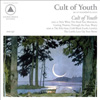 After several years of limited-release, home-recorded solo recordings, Sean Ragon's fascinating neo-folk/post-punk project has finally made its formal debut as an actual band.  While deeply flawed at times, its unusual amalgamation of paganism, acoustic instrumentation, raw power, and wild-eyed intensity can be quite electrifying when it hits the mark.
After several years of limited-release, home-recorded solo recordings, Sean Ragon's fascinating neo-folk/post-punk project has finally made its formal debut as an actual band.  While deeply flawed at times, its unusual amalgamation of paganism, acoustic instrumentation, raw power, and wild-eyed intensity can be quite electrifying when it hits the mark.
From the opening notes of "New West," it is immediately apparent that Sean has performed a striking feat of alchemy in assembling his band.  Glenn Maryansky's muscular, rolling toms; the physicality of Micki Pellerano's loud, detuned bass; the clean, floating melodies of Christiana Key's violin; and Sean's own frenzied acoustic guitar strumming and barked/snarled vocals all combine to form a very heavy and distinct aesthetic.  Ragon in particular is quite a compelling and unconventional frontman, easily holding his own against the rumbling din behind him through sheer bulging-tendon force of personality–it wouldn't surprise me at all to learn that he finishes every show with bloody fingers and an utterly ravaged throat.  The band manages to hit near-perfection again on the album's ferocious closing song, "Lace Up Your Boots," which sounds like Death in June doing a raucous, go-for-broke cover of an Oi! anthem.  Unfortunately, things get a bit more complicated and ambiguous during the nine songs that separate those two highlights.
The problem is that Cult of Youth's immense energy and vision is only effective when focused properly and many of the songs seem a bit tentative, misguided, or incomplete.  I am tempted to say that this band has mastered exactly one type of song (the "angry, post-punk sea-shanty") and lose the plot whenever they attempt to diverge from that formula, but a few of their digressions are still pretty likable, such as the goth-folk of "Casting Thorns," or the beautifully melancholy "Weary."  Even some of their misfires are at least interesting, like the stomping Wicker Man-style folk-dance-on-amphetamines of "Monsters."  Ragon is clearly drawing inspiration from some curious and eccentric sources, as there are also shades of mariachi, Eastern-tinged psych, and Morricone on display.  Unfortunately, there are also several songs that are just very confusing or outright bad.  I especially have massive problems with the jazz/funk guitar chords in "The Dead Sea" and the vapid, toothless pop of "Through the Fear."  I sometimes get the feeling that Ragon is trying to stretch unfinished or dubious ideas into songs solely through manic enthusiasm and raw conviction.
The occasional schizophrenia and the huge gulf in quality between the great songs and the not-great songs make Cult of Youth a very frustrating album, but one that is still well-worth hearing, as all of the elements of a pretty great and singular band are evident.  It is always enjoyable to hear something that is this aggressively un-trendy, particularly when it is delivered with so much earnest intensity.  There is an impressive amount of guts, creativity, and ambition on display here–Ragon just needs to get a little better at consistently harnessing it.
Samples:
 
Read More
- Administrator
- Albums and Singles
 In a recent interview, Kyle Bobby Dunn told Fracture Compound that he heard "the truth" in his favorite music, a truth that he associates with the "brutal honest beauty" of certain classical compositions. Kyle doesn't spell out what he thinks the truth is, but I suspect that Ways of Meaning provides a clue.
In a recent interview, Kyle Bobby Dunn told Fracture Compound that he heard "the truth" in his favorite music, a truth that he associates with the "brutal honest beauty" of certain classical compositions. Kyle doesn't spell out what he thinks the truth is, but I suspect that Ways of Meaning provides a clue.
Kyle Bobby Dunn's music is beautiful for a lot of reasons, some obvious and others a little more obscure. In the first place, Kyle writes elegant and aching music that is both picturesque and personal; his melodies effortlessly communicate human emotions like fear, joy, and loneliness, but they can describe places or provide narratives, too. I think it's possible that some of Kyle's music is pleasing simply because it's the musical representation of a pleasing place or memory. Either way, Kyle uses simple ingredients to create attractive, and sometimes complex, music, which brings me to the obscure qualities. They have less to do with the sound of the music itself and more to do with the effort put into making it. Following the lead of several great composers, Kyle strives to produce a wide range of sounds and colors using a minimum of elements, and there is something pleasing about that in and of itself. It is a great challenge to say more with less, and hearing someone face that challenge is akin to watching an athlete accomplish a difficult feat. Ways of Meaning is also just over 40 minutes long, so it features both a strict economy of instrumentation and time. Dunn knows that simplicity has its own beauty, and he has suffused his latest album with it in every way possible.
That's something Kyle has always done with his music, though. What makes Ways different is the secret Kyle has smuggled inside it. That secret first comes to light on "Movement for the Completely Fucked," a song whose title would be comical if it weren't so insidious. Like the other five songs on this album, it's both calm and measured, but unlike the other five, its title is completely incongruous. I'd chalk that fact up to impertinence, except "Movement" is ambiguous to the point of being ice cold, like a dead stare from across the poker table. The music is undeniably attractive, but with this added intrigue, it acquires the brutality Dunn mentioned in his interview. It ceases to be pretty in a simple way, and it loses some of its obscure allure at the same time. But, because it's still composed of the same elements as the other songs, it refuses any deeper inquiry. There are no lyrics, no honest statements, and no guideposts. After getting to this point, all I hear is the sound of Kyle being erased from his music. By stripping his instrumentation down and refusing to utilize conventional forms, Kyle both simplifies his music and removes himself from it. What's left is uncertain and even misleading.
So, when Kyle says he is drawn to the truthfulness of his favorite music, I have to wonder what he has in mind and whether he intends to infuse his own music with that same truthfulness. As I listen to Ways, I think the answer must have something to do with the play between simplicity and meaning, a natural topic for someone attracted to minimalism. It's tempting to think that, as music becomes simpler, so too must its content, but Kyle challenges that notion with the smallest of twists. Were the music just a shade happier or a tad darker, it would be easy to dismiss this discrepancy, or to miss it altogether. Of course, were "Movement for the Completely Fucked" named otherwise, there would be no reason to suspect anything at all. In any case, Kyle underlines the complexity of the idea of "meaning" by demonstrating its volatility in even a spartan musical environment. There's nothing surprising about that conclusion, but he expresses it in such a way that it becomes evidently frightening, honest, and beautiful. Music isn't terribly different from language, and if sound is so ambiguous, then think how much more difficult language must be, whether we realize it or not.
Of course, I haven't read that Kyle has said anything about that. Maybe the truth is that minimalism isn't as minimal as we might think, or that music can be beautiful whether it means anything or not.
samples:
 
Read More
- Administrator
- Albums and Singles
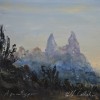 According to major news stations, approximately 3% of America's population was convinced the rapture might occur on May 21, 2011, due to the prophecy of a Christian evangelist, radio personality, and madman. A day later, and the apocalypse hasn't come—surprise!—which means you still have a chance to hear Bill Callahan's latest, aptly-named album before the world actually ends.
According to major news stations, approximately 3% of America's population was convinced the rapture might occur on May 21, 2011, due to the prophecy of a Christian evangelist, radio personality, and madman. A day later, and the apocalypse hasn't come—surprise!—which means you still have a chance to hear Bill Callahan's latest, aptly-named album before the world actually ends.
Callahan has been releasing music for 20 years now, and Apocalypse isn't likely to change minds for those not interested by now. It is a fine addition to his catalog, though—I have played it every week since I heard it back in March, and to my ears, this is the best album he has made since his final full-length as Smog, 2005's A River Ain't Too Much to Love. As usual, this is a subtle progression for Callahan that contains small tweaks to his approach—seven intimate songs in 40 minutes that are captured well by the serene, scenic landscape on its cover.
My favorite aspect of the album—like Callahan's last full-length, 2009's Sometimes I Wish We Were an Eagle—is the total richness of the performances captured. Apocalypse sounds flat-out gorgeous, among the best production and mastering jobs this year. The album was supposedly recorded live in the studio, and the production reflects that: there's a gritty, one-take-or-bust character to the songs that is urgent, impassioned. Details abound in the mix, whether the echo of Callahan's vibrating acoustic guitar strings; the howl and strum of his electric; the gravity of his nuanced baritone; or his ensemble's accompaniment on strings, banjo, drums, and other subtle flourishes. The whole thing is a joy to listen to, regardless of whether the songs themselves are any good.
Luckily, the songs are on-point more often than not. The earthy production lends itself well to a set of seven tunes that sprawl and stretch out, with less concision than Callahan typically seems to shoot for. His lyrics dance around vaguely apocalyptic topics, though often on a personal level, such as the struggles in a relationship. "Where has my baby gone? / She was not a weed, she was a flower," he mourns. At other points, he centers on humility and the value of self-discovery. "My, my, my apocalypse," Callahan intones, "I realized I had said very little about ways, or wheels, or riding for the feeling." His lyrics are just vague enough to avoid being pinned down with specific meaning, but it's tough not to feel their impact all the same. In the same song, he concludes: "Leaving is easy when you've got someplace you need to be"—perhaps the charm is that it's impossible to tell how confident he really is in that assertion.
At one point, Callahan turns his attention outward to his home country. Like many Americans, he struggles with how to interpret recent events and our overall state of life. Should he feel proud and patriotic? Embarrassed? Angry at leaders who made decisions to stay at war? Or should he simply shrug it off with a self-deprecating laugh? Callahan is bright enough to know not to place all his eggs in one basket: emotions are complex things, as is our country, and his lyrics on "America" are simultaneously reverent and critical, witty and unknowing. In the end, he reverts inward again, knowing that when he can't control his surroundings, or the people in his life, that he can always control himself:
One fine morning, I'm gonna ride out
Just me and the skeleton crew
We're gonna ride out in a country kind of silence
Fair enough—if Apocalypse is his parting shot, it's a bulls-eye.
Samples:
Read More


